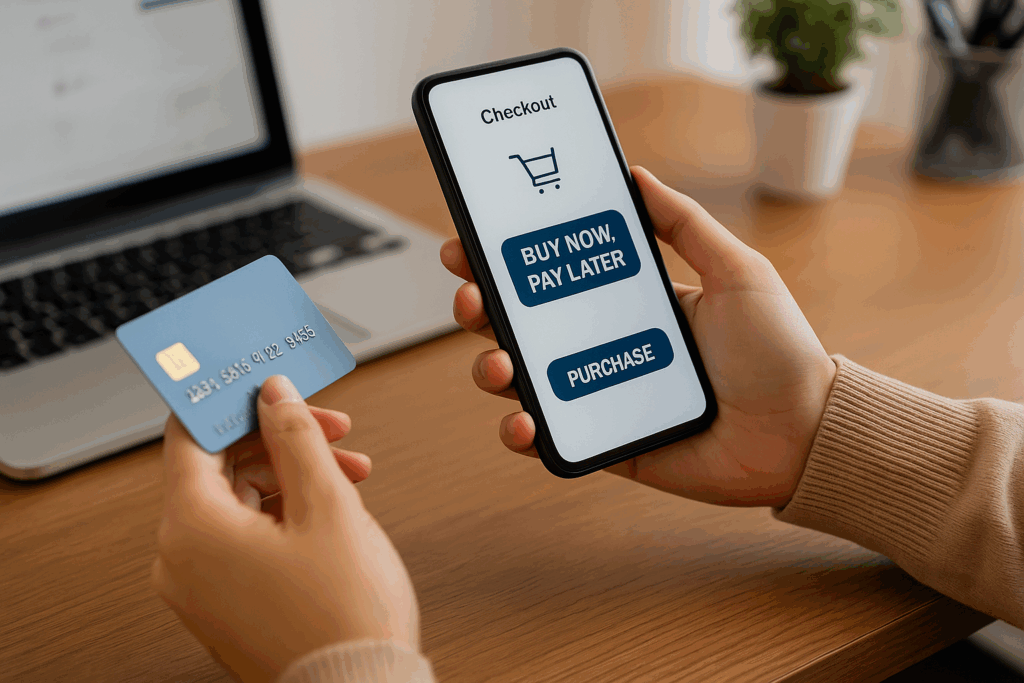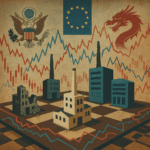In the past five years, Buy Now, Pay Later services have evolved from niche fintech solutions into a widely embraced payment method across the UK. Driven by the shift to online retail and changing consumer habits, this model now defines how younger, tech-savvy shoppers manage spending. Offering immediate access to goods and delayed payments, it taps into a desire for flexibility without the burdens of traditional credit. As financial pressures mount, BNPL’s influence on consumer behaviour is only becoming more significant.
But the rapid growth of these services has not gone unnoticed by regulators and analysts. Concerns have emerged about affordability, transparency and how easily users can lose track of instalments. As Buy Now, Pay Later becomes embedded in both digital and brick-and-mortar retail, the need for oversight and consumer education grows. Understanding how BNPL works, who benefits from it, and where the risks lie is now part of a broader conversation on modern credit use.
Why are consumers choosing Buy Now, Pay Later?

Millennials and Gen Z are leading the charge in Buy Now, Pay Later adoption, valuing it for speed, simplicity and control. Many prefer avoiding credit cards due to their long-term commitments or hidden fees. BNPL offers an alternative that feels more transparent and manageable, particularly for those with unpredictable incomes or limited access to traditional credit lines. It has quickly become a go-to option at checkout for smaller, planned purchases.
Beyond avoiding debt stigma, these consumers also value instant gratification. BNPL enables them to spread out costs for items like fashion, tech and wellness products, while still receiving their orders immediately. It’s this balance — immediate ownership with spaced-out payments — that drives adoption. The psychological appeal of affordability, even if only perceived, makes Buy Now, Pay Later especially attractive during uncertain economic periods.
How does Buy Now, Pay Later actually work?
At its core, BNPL allows consumers to divide a purchase into equal instalments, typically over four payments. Providers like Klarna, Clearpay and PayPal Pay in 3 integrate seamlessly into retail platforms and approve users quickly, often with only a soft credit check. Once approved, buyers complete the transaction and begin repayment within a few weeks. Retailers benefit from increased conversion rates and larger average orders, making BNPL a win for sales volume.
Buy Now, Pay Later is usually marketed as interest-free, but that only holds if payments are made on time. Missed instalments can trigger late fees, collection activity, or — increasingly — impact a consumer’s credit score. As BNPL data becomes more visible to credit agencies, repayment discipline matters more. While the model is designed to feel light-touch, it still carries financial responsibility, especially for repeat users juggling multiple repayments.
Which retail sectors are seeing the most BNPL growth?
Fashion and beauty retailers were the first to adopt Buy Now, Pay Later, recognising its potential to reduce cart abandonment and increase customer satisfaction. Brands like ASOS, PrettyLittleThing and Boots saw notable uplifts in conversion rates after integrating BNPL at checkout. Over time, electronics, home goods and even travel providers joined in, reflecting how the service moved beyond impulse buys to bigger-ticket items.
More recently, BNPL has entered sectors like fitness equipment, furniture and pet care. Some supermarkets and pharmacies are also experimenting with limited BNPL applications for non-perishables. The growing presence of Buy Now, Pay Later in essential and lifestyle shopping points to a cultural shift — where instalment payments are no longer tied to luxury or hardship, but simply another way to manage regular spending.
The benefits and risks of Buy Now, Pay Later
| Benefits | Risks |
|---|---|
| Interest-free instalments | Encourages overspending |
| Fast and easy approval | Can lead to missed payments and penalties |
| No traditional credit checks (initially) | BNPL debts may affect credit reports as rules evolve |
| Increased purchasing power | Lack of transparency in total obligations across apps |
For many, Buy Now, Pay Later is a budgeting tool that provides flexibility during seasonal spending or income gaps. When used occasionally and paid on time, the benefits are tangible: more control, less pressure, and predictable instalments. But for others, the very ease of access becomes a problem. The model can blur the lines between affordability and temptation, especially when multiple platforms are used simultaneously.
Without a centralised way to monitor all BNPL accounts, some users underestimate their total obligations. Overlapping repayments can become overwhelming, leading to financial stress. Education, transparency and integration with budgeting tools could make Buy Now, Pay Later safer for the average consumer. Until then, responsible use remains largely self-managed and dependent on financial literacy.
How regulation is catching up
Regulatory bodies like the Financial Conduct Authority (FCA) have responded to BNPL’s rise by proposing tighter controls. By 2025, all major Buy Now, Pay Later providers in the UK will be required to carry out formal affordability checks and present clearer terms. These reforms aim to close gaps in consumer protection that have allowed confusion and overextension to proliferate.
Alongside policy changes, there’s increasing emphasis on public awareness. Campaigns, digital alerts and repayment tracking tools are being developed to help users understand the implications of missed payments. The goal is to keep Buy Now, Pay Later accessible for responsible users while reducing harm to those at higher risk. Success will depend on cooperation between regulators, fintechs and retailers alike.
Is BNPL a trend or a permanent shift?
With over 17 million active users in the UK, Buy Now, Pay Later shows no signs of slowing down. The service has become embedded in consumer routines and continues to evolve. As providers expand into loyalty schemes, virtual cards and budget planning apps, BNPL is morphing into a broader financial ecosystem. What began as a checkout add-on is becoming a foundational part of how people manage short-term expenses.
Retailers are adapting accordingly, redesigning user journeys to emphasise flexible payment options. Financial institutions are also watching closely, some choosing to partner with BNPL providers or develop similar products. All signs suggest that Buy Now, Pay Later isn’t just a trend — it’s a reflection of shifting expectations around credit, convenience and consumer autonomy in the digital age.
Conclusion: navigating buy now, pay later responsibly
Used with care, Buy Now, Pay Later can help consumers manage budgets, access essential goods and avoid interest-heavy debt. Its appeal is rooted in convenience, and for many, it serves as a bridge between paydays or a tool to spread seasonal costs. However, like all financial products, it works best when used with full understanding of the risks involved.
The future of Buy Now, Pay Later will be shaped by how well consumers, providers and regulators respond to its challenges. With smarter oversight, integrated tech and better financial education, it can remain a useful option. But without these supports, its expansion could lead to new forms of strain. Striking that balance will define whether BNPL empowers — or burdens — the next generation of spenders.


